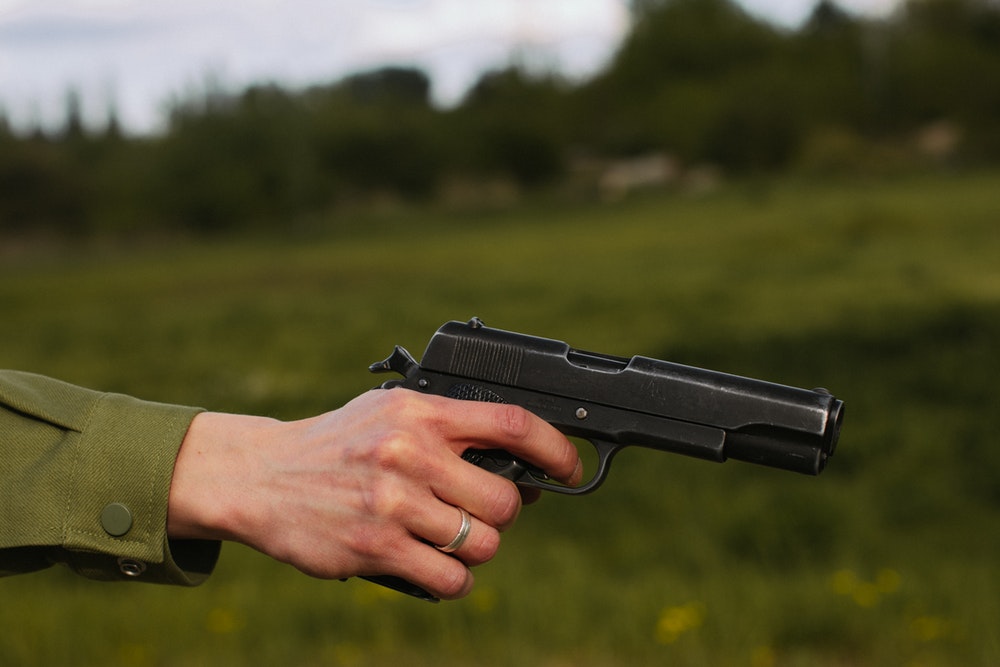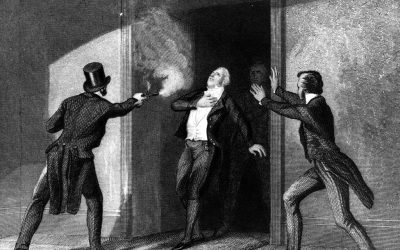A headline like “Statistics Canada to Collect Data on Origins of Guns Used in Crime” in 2020 might seem surprising.1 After all, gun control, firearms-related offences, and the illegal distribution of firearms have been subjects of news reports and have driven legislation over the past several decades. This is symptomatic of a larger gap in the mitigation of gun violence in Canada—the illegal trafficking of firearms.
Wendy Cukier, president of the Coalition for Gun Control, agrees there has been a gap in the information about how guns are used and where they come from. Although we often hear about significant firearms seizures, the information remains fragmented and inconsistent. As she notes: “The information is quite fragmented. Jurisdictions like Toronto collect and trace and track crime guns, but a lot of others don’t.”2
Clearly, there is a fundamental gap in the strategic interdiction by law enforcement services, including the Canada Border Services Agency (CBSA), in the targeting of firearms smuggling; too much enforcement depends on the chance discovery of illegal firearms as they cross the border.
Historically, firearms the CBSA has seized at land borders generally fall into two categories: the personal weapons of U.S. residents who are carrying them for their own protection or for hunting, or firearms believed to be destined for Canada’s illegal firearms market. More than 82 percent of firearms the CBSA intercepts are seized at land borders. From January 2001 to December 2005, the CBSA seized 4,281 firearms, of which 2,698 (63 percent) were handguns and 1,541 (35.9 percent) were long guns. The remaining forty-two firearms were classified as antique.3
The CBSA seized 509 firearms (non-restricted, restricted, and prohibited firearms) in the first quarter of fiscal year 2021 to 2022, 548 for fiscal year 2021 to 2022, and 753 for fiscal year 2019 to 2020.4
There is, of course, no way of knowing how many guns escape detection. Canada’s largest municipal police service (Toronto) seized 658 guns used in crimes during 2020, of which 318 were classified as prohibited and 144 were restricted.5
Montreal police reported seizing 601 firearms in 2019, and 744 in 2020.6
On March 5, 2021, the RCMP intercepted a single shipment of 249 prohibited Polymer 80 (P80) PF940C Glock-type handguns in the Dundee, Que. area, near the U.S. border.7
A CBC analysis covering two decades of homicide statistics for Winnipeg reveals a major shift in the types of weapons used in criminal incidents. Winnipeg saw forty-two homicides in 2019, more than in any other previous ten-year period.8 Winnipeg police seized 1,771 firearms in 2018, up from 1,195 in 2017, and carried out 825 seizures in 2016.9
As of September 24, 2021, the Winnipeg Police Service had seized more than three hundred guns, 175 of which were related to criminal acts.10
According to the National Weapons Enforcement Support Team (NWEST), which supports law enforcement to counter the illegal movement of firearms into and across Canada, public agencies seized 26,351 firearms in 2019. Of these, 19,963 were non-restricted, 4,256 were restricted, and 2,132 were prohibited.11
The numbers of illegal firearms circulating across Canada cannot be accurately estimated; neither can the number of sources and routes of entry of illegally imported firearms.
Even more concerning is a trend in the use of so-called ghost guns, which are guns made illegally at home using manufactured components. Criminals favour ghost guns because they are untraceable.
What we do know is that there were 1,235,914 firearms (1,057,418 restricted and 178,496 prohibited) registered to individuals or businesses across Canada in 2019.12
The top four jurisdictions in order of the largest numbers of registered firearms in 2019 were:13
Restricted Prohibited Total
Ontario 401,319 72,446 473,765
Alberta 205,289 24,854 230,143
British Columbia 194,613 28,643 223,256
Quebec 97,409 26,460 123,869
The top four jurisdictions in order of the numbers of firearms that public agencies seized in 2019 were:14
Ontario 7,147
Quebec 6,852
British Columbia 4,829
Alberta 3,430
On February 16, 2021, the federal government announced a comprehensive package of legislative measures to combat firearms crime and reduce firearms-related deaths. Part of the plan involves empowering provinces to ban handguns if they choose to do so. The federal government would refuse to issue restricted (handgun) licences in any province or municipality that votes to become a “no handgun” jurisdiction. But which group of problem guns does this really target?
The trouble is that the majority of firearms used in the commission of a criminal offence are either long guns, or legally registered, and few are stolen; the vast majority are either illegally imported, home-made, and some are now manufactured using 3D printers.
Between 2014 and 2018 (best available data range for homicide victims), the type of firearm used to commit the homicide were:15
Percentage of homicides
Type of firearms 2014 2015 2016 2017 2018
Percentage
Total firearms 30.45 30.24 37.48 41.27 39.84
Handgun 70.55 60.00 65.33 61.18 65.30
Rifle or shotgun 23.29 21.76 25.13 27.43 25.57
Fully automatic firearm 1.37 3.53 3.02 0.84 0.91
Sawed-off rifle or shotgun 4.11 13.53 6.53 9.28 8.22
Firearm-like weapons 0.68 1.18 0.00 1.27 0.00
In 2020, Statistics Canada reported the sixth consecutive year with an increase in the rate of Criminal Code firearm offences. In 2020, there were 8,344 victims of violent crime in which a firearm was present during the commission of the offence, or a rate of twenty-nine per 100,000 population.16 The number of violent offences specific to firearms increased by 593 incidents in 2020 (from 3,544 in 2019 to 4,137 in 2020), resulting in a 15 percent rate increase.
Discharging a firearm with intent rose by 21 percent, pointing of a firearm rose by 14 percent, and using a firearm in committing an indictable offence rose by 3 percent.17 Much of the increase in firearm-related offences in 2020 was the result of more incidents in Alberta, Quebec, and Ontario—three of the top four provinces for the largest numbers of registered firearms in 2019 and for the numbers of firearms public agencies seized in 2019.
As Toronto Police Chief James Ramer states:
We live in a country with the largest undefended border with a significant gun culture in the United States, and it’s a very difficult issue that we need to address. And, quite frankly, that’s the biggest problem we have in this city— the volume of guns that are coming across the border…We’re going to make our best efforts to be proactive in terms of dealing with offenders using guns, those distributing guns—which, quite frankly, is really a scourge for us.18
The Canadian Association of Chiefs of Police (CACP) states:
We understand the various positions related to the firearms issue and the challenge of balancing individual rights and privileges with the broader rights and safety of society. As police leaders, we place a priority on public safety. We place a priority on victimization. We will always speak from that voice. 
The statement continues:
Based on a preliminary review of the new firearms legislation, the CACP believes that the proposed changes put forward by the federal government recognize that stopping gun violence requires a whole of society approach including education and prevention to address root causes, and law enforcement to help stop the criminal elements who are perpetrating violence in our communities.19
These statements convey some important observations.
First, any legislated solution can and will only target a small fraction of firearms violence and crimes that result from the lack of regulation of weapons currently available on the Canadian market. A discussion on assault-type weapons is not without relevance given a number of mass shootings that have occurred in Canada; however, legislation alone will do little towards the interdiction of illegally sought, imported firearms.
In April 2020, twenty-two people were killed and three others were injured in a mass shooting in Nova Scotia, marking the deadliest mass shooting in Canadian history. The gunman was armed with a Colt law enforcement carbine, a Sturm Ruger Mini-14, and two handguns, which were all illegally obtained and in three cases smuggled into Canada from the U.S.20
Second, the majority of gang-related and other gun-related incidents involve handguns as compared to long guns:
- More than two-thirds of firearm-related violent crime in urban areas involves handguns;
- Rifles or shotguns are more commonly involved in rural firearm-related violent crime;
- Overall, rates are highest in the Prairies and the Territories.21
Third, the majority of illegal firearms, mostly handguns, originate in the United States.
Fourth, any response to gun violence requires a whole-of-society response, including education and mitigation of the root causes.
Ottawa committed $51.2 million for the CBSA over a five-year period that started in 2018 to keep firearms from coming into Canada illegally. The fact that criminals have resorted to the use of crude, home-made handguns may be an indication of the success of cross-border interdiction of firearm trafficking.
However, legislation, enforcement, and education cannot have the desired outcomes if our borders are not secured first.
Anil Anand is a research associate with the Frontier Centre for Public Policy.
Photo by KoolShooters from Pexels.
[show_more more=”SeeEndnotes” less=”Close Endnotes”]
- David Burke, “Statistics Canada to Collect Data on Origins of Guns Used in Crime,” CBC, May 25, 2020, https://www.cbc.ca/news/canada/nova-scotia/gun-crime-statistics-canada-research-1.5579971.
- Ibid.
- Government of Canada, “Combating Illicit Firearms: A 2006 Canada and the United States Overview,” https://www.publicsafety.gc.ca/cnt/rsrcs/pblctns/archive-cmbtng-llct-frrms/archive-cmbtng-llct-frrms-eng.pdf.
- Canada Border Services Agency, “Canadian Border Services Agency Seizures,” https://www.cbsa-asfc.gc.ca/security-securite/seizure-saisie-eng.html.
- Toronto Police Service, “2020 Annual Statistical Report.”
- Service de la police de la ville de Montréal, “Annual Report 2020,” https://rapportspvm2020.ca/wp-content/uploads/2021/06/Rapport-spvm-2020-en.pdf.
- RCMP, “Nearly 250 Prohibited Handguns Seized in Dundee: Sherbrooke Man Charged,” March 9, 2021, https://www.rcmp-grc.gc.ca/en/news/2021/nearly-250-prohibited-handguns-seized-dundee-sherbrooke-man-charged.
- Jacques Marcoux and Caroline Barghout, “Shooting Deaths Soar as Winnipeg Sees Record Number of Homicides,” CBC, December 19, 2019, https://www.cbc.ca/news/canada/manitoba/winnipeg-gun-homicides-analysis-1.5401431.
- Staff, “Gun Crime Spikes as Firearms Become Easier to Get, Winnipeg Police Chief Says,” CBC, September 13, 2019, https://www.cbc.ca/news/canada/manitoba/gun-crime-up-police-1.5283766.
- James Snell, “Police Continue to Seize Large Quantities of Guns,” Winnipeg Sun,
- RCMP, “2019 Commissioner of Firearms Report,” https://www.rcmp-grc.gc.ca/en/firearms/2019-commissioner-firearms-report?wbdisable=true#a3-5.
- Ibid.
- Ibid.
- Ibid
- Statistics Canada, “Number and Percentage of Homicide Victims, By Type of Firearm Used to Commit the Homicide, Inactive,” (Archived), https://www150.statcan.gc.ca/t1/tbl1/en/tv.action?pid=3510007201&pickMembers%5B0%5D=3.2&cubeTimeFrame.startYear=2014&cubeTimeFrame.endYear=2018&referencePeriods=20140101%2C20180101.
- Greg Moreau, “Police-reported Crime Statistics in Canada, 2020,” Canadian Centre for Justice and Community Safety Statistics, July 27, 2021, https://www150.statcan.gc.ca/n1/pub/85-002-x/2021001/article/00013-eng.htm.
- Ibid.
- Adrian Humphreys, “Toronto Gun Violence Fuelled by U.S. ‘Gun Culture’ and Pandemic Mental-health Issues: Police Chief,” National Post, November 5, 2021, https://nationalpost.com/news/canada/toronto-gun-violence-fuelled-by-u-s-gun-culture-and-pandemic-mental-health-issues-police-chief.
- Canadian Association of Chiefs of Police, “CACP Statement: Bill C21 – New Firearms Legislation,” February 17, 2021, https://cacp.ca/news/cacp-statement-bill-c21-new-firearms-legislation.html.
- Andrew Russell, “Colt Carbine, Ruger Mini-14 among Illegally Obtained Firearms Used By Nova Scotia Shooter, Docs Show,” Global News, November 20, 2020, https://globalnews.ca/news/7474635/nova-scotia-shooting-illegal-firearms-colt-carbine-ruger-mini-14/.
21. Yvan Clermont, “Firearm-related Crime in Canada,”
[/show_more]



